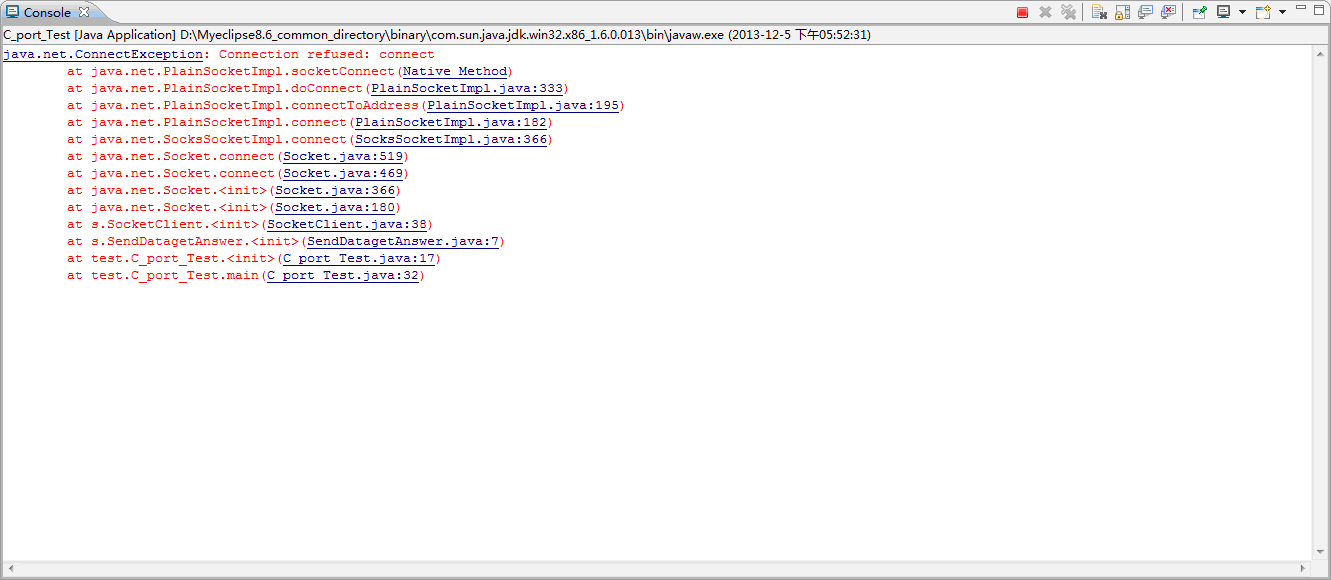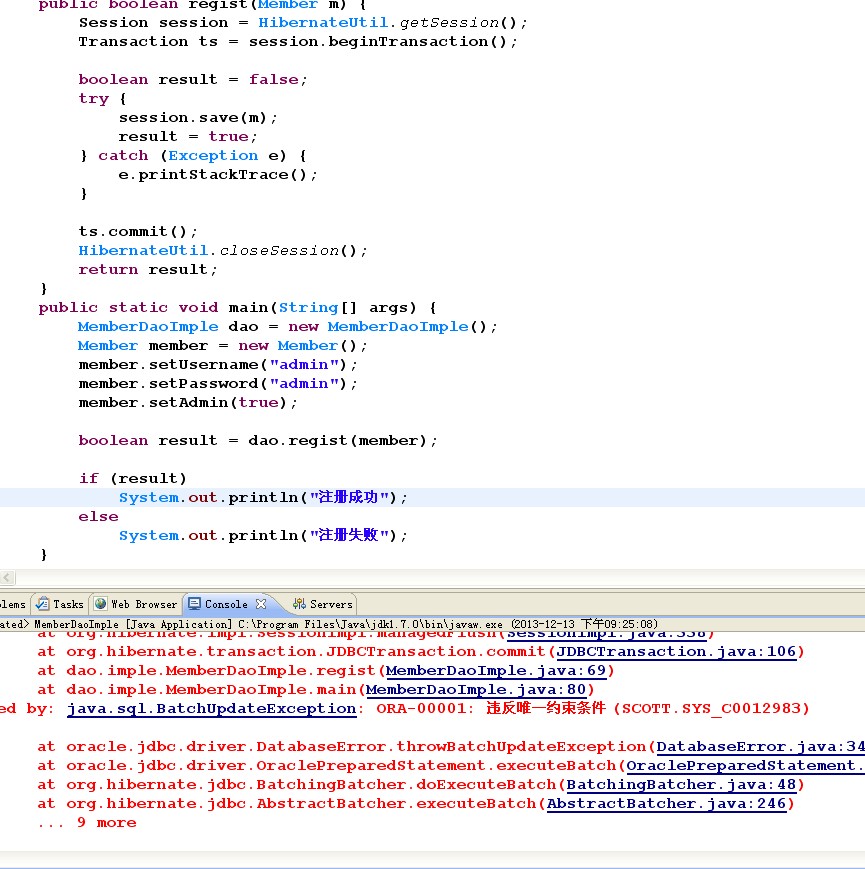Java SE security tutorial - Step 1
This topic describes a 易做图 unsecured sample. Additional security features are added incrementally in the steps of the tutorial to increase the amount of integrated security that is available.
Before you begin
Note: All of the files required for this step of the tutorial are provided in the following section.
Procedure
Running the sample
Start the catalog service by using the following scripts. For more information about starting the catalog service, see Starting the catalog service in a stand-alone environment.
Navigate to the bin directory: cd objectgridRoot/bin
Start a catalog server named catalogServer:
startOgServer.sh catalogServer
startOgServer.bat catalogServer
Navigate to the bin directory cd objectgridRoot/bin
Then launch a container server named c0 with the following script:
startOgServer.sh c0 -objectGridFile ../xml/SimpleApp.xml -deploymentPolicyFile ../xml/SimpleDP.xml -catalogServiceEndPoints localhost:2809
startOgServer.bat c0 -objectGridFile ../xml/SimpleApp.xml - deploymentPolicyFile ../xml/SimpleDP.xml -catalogServiceEndPoints localhost:2809
Example
For more information about starting container servers, see Starting container processes.
After the catalog server and container server have been started, launch the client as follows.
Navigate to the bin directory one more time.
java -classpath ../lib/objectgrid.jar;../applib/secsample.jar com.ibm.websphere.objectgrid.security.sample.guide.SimpleApp
The secsample.jar file contains the SimpleApp class.
The output of this program is:
The customer name for ID 0001 is fName lName
You may also use xsadmin to show the mapsizes of the "accounting" grid.
Navigate to the directory objectgridRoot/bin.
Use the xsadmin command with option -mapSizes as follows.
xsadmin.sh -g accounting -m mapSet1 -mapSizes
xsadmin.bat -g accounting -m mapSet1 -mapSizes
You will see the following output.
This administrative utility is provided as a sample only and is not to be considered a fully supported component of the WebSphere eXtreme Scale product.
Connecting to Catalog service at localhost:1099
*********** Displaying Results for Grid - accounting, MapSet - mapSet1 ***********
*** Listing Maps for c0 ***
Map Name: customer Partition #: 0 Map Size: 1 Shard Type: Primary
Server Total: 1
Total Domain Count: 1
Stopping servers
Container server
Use the following command to stop the container server c0.
stopOgServer.sh c0 -catalogServiceEndPoints localhost:2809
stopOgServer.bat c0 -catalogServiceEndPoints localhost:2809
You will see the following message.
CWOBJ2512I: ObjectGrid server c0 stopped.
Catalog server
You can stop a catalog server using the following command.
stopOgServer.sh catalogServer -catalogServiceEndPoints localhost:2809
stopOgServer.bat catalogServer -catalogServiceEndPoints localhost:2809
If you shut down the catalog server, you will see the following message.
CWOBJ2512I: ObjectGrid server catalogServer stopped.
Required files
The file below is the Java class for SimpleApp.
SimpleApp.java // This sample program is provided AS IS and may be used, executed, copied and modified // without royalty payment by customer // (a) for its own instruction and study, // (b) in order to develop applications designed to run with an IBM WebSphere product, // either for customer's own internal use or for redistribution by customer, as part of such an // application, in customer's own products. // Licensed Materials - Property of IBM // 5724-J34 (C) COPYRIGHT International Business Machines Corp. 2007-2009 package com.ibm.websphere.objectgrid.security.sample.guide; import com.ibm.websphere.objectgrid.ClientClusterContext; import com.ibm.websphere.objectgrid.ObjectGrid; import com.ibm.websphere.objectgrid.ObjectGridManager; import com.ibm.websphere.objectgrid.ObjectGridManagerFactory; import com.ibm.websphere.objectgrid.ObjectMap; import com.ibm.websphere.objectgrid.Session; public class SimpleApp { public static void main(String[] args) throws Exception { SimpleApp app = new SimpleApp(); app.run(args); } /** * read and write the map * @throws Exception */ protected void run(String[] args) throws Exception { ObjectGrid og = getObjectGrid(args); Session session = og.getSession(); ObjectMap customerMap = session.getMap("customer"); String customer = (String) customerMap.get("0001"); if (customer == null) { customerMap.insert("0001", "fName lName"); } else { customerMap.update("0001", "fName lName"); } customer = (String) customerMap.get("0001"); System.out.println("The customer name for ID 0001 is " + customer); } /** * Get the ObjectGrid * @return an ObjectGrid instance * @throws Exception */ protected ObjectGrid getObjectGrid(String[] args) throws Exception { ObjectGridManager ogManager = ObjectGridManagerFactory.getObjectGridManager(); // Create an ObjectGrid ClientClusterContext ccContext = ogManager.connect("localhost:2809", null, null); ObjectGrid og = ogManager.getObjectGrid(ccContext, "accounting"); return og; } }
The getObjectGrid method in this class obtains an ObjectGrid, and the run method reads a record from the customer map and updates the value.
To run this sample in a distributed environment, an ObjectGrid descriptor XML file SimpleApp.xml, and a deployment XML file, SimpleDP.xml, are created. The files are featured in the following example:
SimpleApp.xml <?xml version="1.0" encoding="UTF-8"?> <objectGridConfig xmlns:xsi="http://www.w3.org/2001/XMLSchema-instance" xsi:schemaLocation="http://ibm.com/ws/objectgrid/config ../objectGrid.xsd" xmlns=www.zzzyk.com> <objectGrids> <objectGrid name="accounting"> <backingMap name="customer" readOnly="false" copyKey="true"/> </objectGrid> &l
补充:综合编程 , 安全编程 ,



